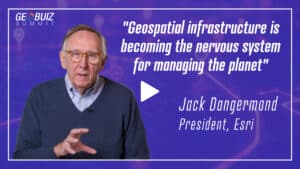In an exclusive interview with the Geospatial World, Hukum Singh Meena, Additional Secretary, Department of Land Resources, Ministry of Rural Development, talks about how the National Geospatial Policy will revolutionize land record keeping in rural India.
What are the new opportunities that the National Geospatial Policy 2022 will unveil in the department of Land Resources under the Ministry of Rural Development?
It’s a very important question as far as our department is concerned. Department of Land Resources is the major holder of data in India. The last survey, which was conducted in India, was between 1885-1935. Most of the pedestal maps available are 100-120 old. There is a need to update these data and generate new reports based on ground realities.
Land related disputes occur because of the difference between the record and the actual possession. It may be related to title, demarcation of boundary or proportion, area and share etc. True position is not reflecting in the record. Whatever is there in the record should be there on ground too. There is a need for survey and re-survey of the existing land in the entire country.
Whenever you want to undertake survey of land using modern technology, you need to take several permissions before generating data. This is where the role of geospatial policy comes into play. I have the practical experience of being involved in generating data using aerial photography in 2011-12. I had to take permission from six to eight agencies before undertaking this exercise.
It took 12 months for me to take such clearances, which resulted in the loss of rupees 200 crore to the government of Bihar, because we had employed 5000 engineers to verify the data. The agencies were quoting more rates because they knew that it would take more time in clearance from various government agencies for processing of the acquired data.
After acquiring the data, the state home department did not allow me to make those data public so that people can benefit from the work.
The new policy clearly stipulates that whenever government agencies are generating the data, they don’t have to take any permission. That is a big leap.
Any Indian entity — may be a citizen or organization — can freely access the geospatial data minus the negative list. The geospatial data is very useful for informed policy decision. The policy guidelines will solve all these issues. It will be a boom and emerge to be a path breaking initiative for the economy of the country. We are the largest holder of geospatial data in the world.
ALSO READ: Geospatial Key Enabler for India’s ‘$5 Tn Economy’ Vision: Esri’s Agendra Kumar
In what ways the National Geospatial Policy will guide and facilitate States to modernize land record management & build up a land information system?
Under the new policy there is no need to take permission before generating data. There were restrictions also on sharing data. Earlier, you cannot download a data without taking permission from competent authorities. Now, there is a clear guideline both for generating, sharing and how you can use data for your own purpose.
Continuity and updating of land data is very important part of geospatial data where private players will have an advantage. If you consider geospatial data for keeping land records, there is a change of 10-12% holding in land every year. So, after five-six years your data become obsolete. Involvement of private players will eliminate this redundancy from the system. They have the know-how and resource with required skill sets to carry out the updating of data.
How forward looking the National Geospatial Policy 2022 is?
Clear policy and guidelines have been framed for private players to access geospatial data. Now, private players can develop national data base which they can use for any purpose, including generation of revenue. It is a step in ease of doing business for the government and private sectors. If you can find all geospatial data at one place, why will you not use it for nominal fee.
What are the new opportunities that this policy will unravel?
Immense opportunities for the public and private players. It will be easier for the government agencies to promote private players in this field. So far it was only the domain of the government sector.
Why private players should not have data at one portal or place? They can sell those data to any private or government entity. Government will have ease in obtaining data from private players rather than generating it themselves.
ALSO READ: India’s Geospatial Policy Sets the Stage for Dynamic Innovation and Rapid Growth
Private players will also have the ability to update those data periodically. It is difficult in government because of the sanctions and approval required for undertaking such task. Then there is security protocol that they want to keep. For government agencies updating data is a big challenge. They don’t have expertise, manpower, recurring budget to update data. Private players will now have the rights to generate data and there should be a public-private partnership in generating data. It will also generate employment opportunities.
Don’t you think that environmental conservation and climate change challenges could have been given more importance than what it found in the geospatial policy announced by the government.
Planning through GIS and mapping certainly helps. Geospatial technologies have great value in tracking the progress of the project, deforestation, and mining. The geospatial technologies also help in formulating regulatory mechanism especially in the climate and environmental aspects. Many Indian states are aspiring to move in that direction after the promulgation of the National Geospatial Policy. Bihar, Karnataka, Madhya Pradesh, and Rajasthan to name a few.









